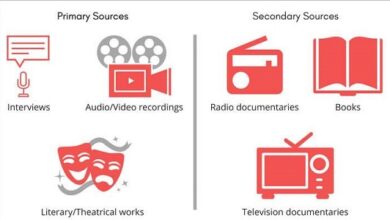What is validity and reliability in research/4 major differences
What is Reliability?
The idea behind reliability is that meaningful results should be more than a one-time finding and inherently repeatable . What is validity and reliability in research?
Other researchers must be able to perform the same experiment under the same conditions and generate the same results. This will reinforce the results and ensure that the scientific community generally accepts the hypothesis .
Without this replication of statistically significant results , the experiment and investigation will not have met all the requirements for verifiability .
This prerequisite is essential for a hypothesis to establish itself as an accepted scientific truth.
For example, if you are conducting a quick response experiment, you will use some kind of stopwatch. Generally, it is reasonable to assume that the instruments are reliable and will record real time correctly. However, in many cases diligent scientists take steps to minimize the chances of malfunctions and to take care of validity and reliability.
If we go to the other extreme, any experiment that uses human opinion will always generate discussion. What is validity and reliability in research?
For example, if observers rate certain aspects, as in Bandura’s Bobo Doll Experiment , then the reliability of the test is compromised. Human opinion can vary widely between observers and the same individual can rate the same things differently depending on the time of day and mood.
This means that these experiments are more difficult to repeat and are inherently less reliable. Reliability is a necessary ingredient in determining the overall validity of a scientific experiment and improving the strength of the results.
The debate between pure and social scientists regarding reliability is strong and ongoing.
What is validity?
Validity covers the entire experimental concept and establishes whether the results obtained meet all the requirements of the scientific investigation method or not.
For example, there must have been randomization of the sample groups and appropriate care and diligence in assigning controls .
The internal validity dictates how an experimental design is structured and covers all stages of the method of scientific research . What is validity and reliability in research?
Even if your results are excellent, sloppy and inconsistent design will compromise your integrity in the eyes of the scientific community. The internal validity and reliability are the core of any experimental design.
The external validity is the process of examining the results and question whether there are other relationships causal possible.
The control groups and randomness diminish the problems of external validity, although no method can be completely successful. Therefore, the statistical tests of a hypothesis called significant is not the absolute truth.
Any scientific research design only proposes a possible cause of the studied effect.
There is always the possibility that another unknown factor contributed to the results and conclusions. This external causal relationship may become more apparent as techniques are refined and perfected.
Differences between reliability and validity
Although these two psychometric properties are closely related, the truth is that they refer to clearly differentiated aspects. Let’s see what these differences consist of .
1. The object of analysis
Reliability is a characteristic of the instrument, in the sense that it measures the properties of the items that compose it. On the contrary, validity does not refer exactly to the instrument but to the generalizations that are made from the results obtained through it.
2. The information they provide
Although it is a somewhat simplistic way of putting it, it is generally stated that validity indicates that a psychometric tool actually measures the construct it intends to measure, while reliability refers to whether it measures it correctly, without errors. What is validity and reliability in research?
3. The way they are calculated
To measure reliability, three main procedures are used: the two halves method, the parallel forms method and the test-retest . The most used is the procedure of the two halves, in which the items are divided into two groups once the test has been answered; then the correlation between the two halves is analyzed.
The method of parallel or alternative forms consists of creating two equivalent tests to measure the extent to which the items correlate with each other. The test-retest is based simply on passing the test twice, under conditions that are as similar as possible. Both procedures can be combined, giving rise to the test-retest with parallel forms, which consists of leaving a time interval between the first form of the test and the second.
For its part, validity is calculated in different ways depending on the type , but in general all the methods are based on the comparison between the score in the objective test and other data from the same subjects in relation to similar traits; the goal is that the test can act as a predictor of the trait.
Among the methods used to assess validity, we find factor analysis and the multi-method-multi-feature matrix technique. Also, content validity is often determined by rational, not statistical, analysis; for example, it includes face validity, which refers to the subjective judgment of experts about the validity of the test. What is validity and reliability in research?
4. The relationship between both concepts
The reliability of a psychometric instrument influences its validity: the more reliable it is, the greater its validity will also be . Therefore, the validity coefficients of a tool are always lower than the reliability coefficients, and the validity indirectly informs us about the reliability.



